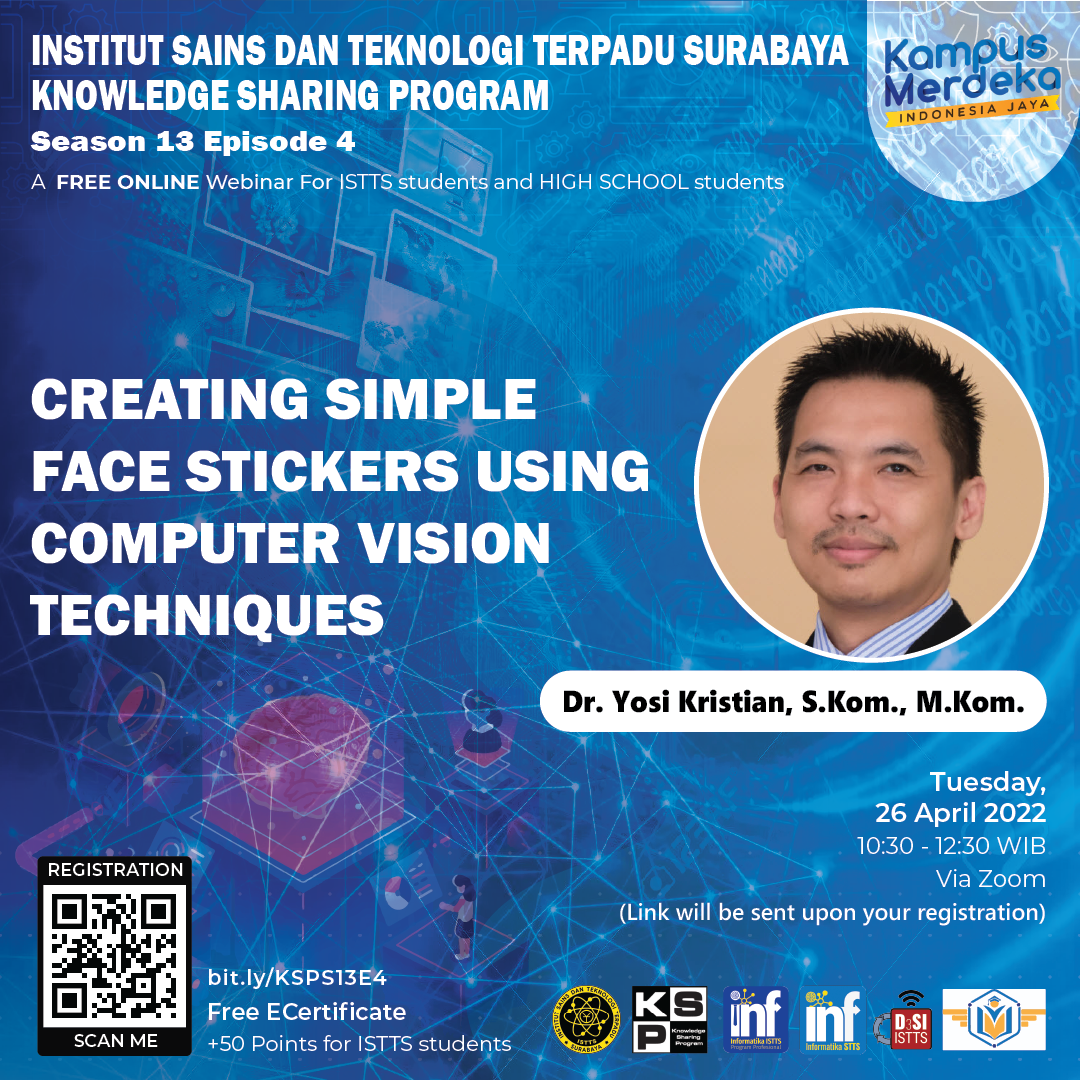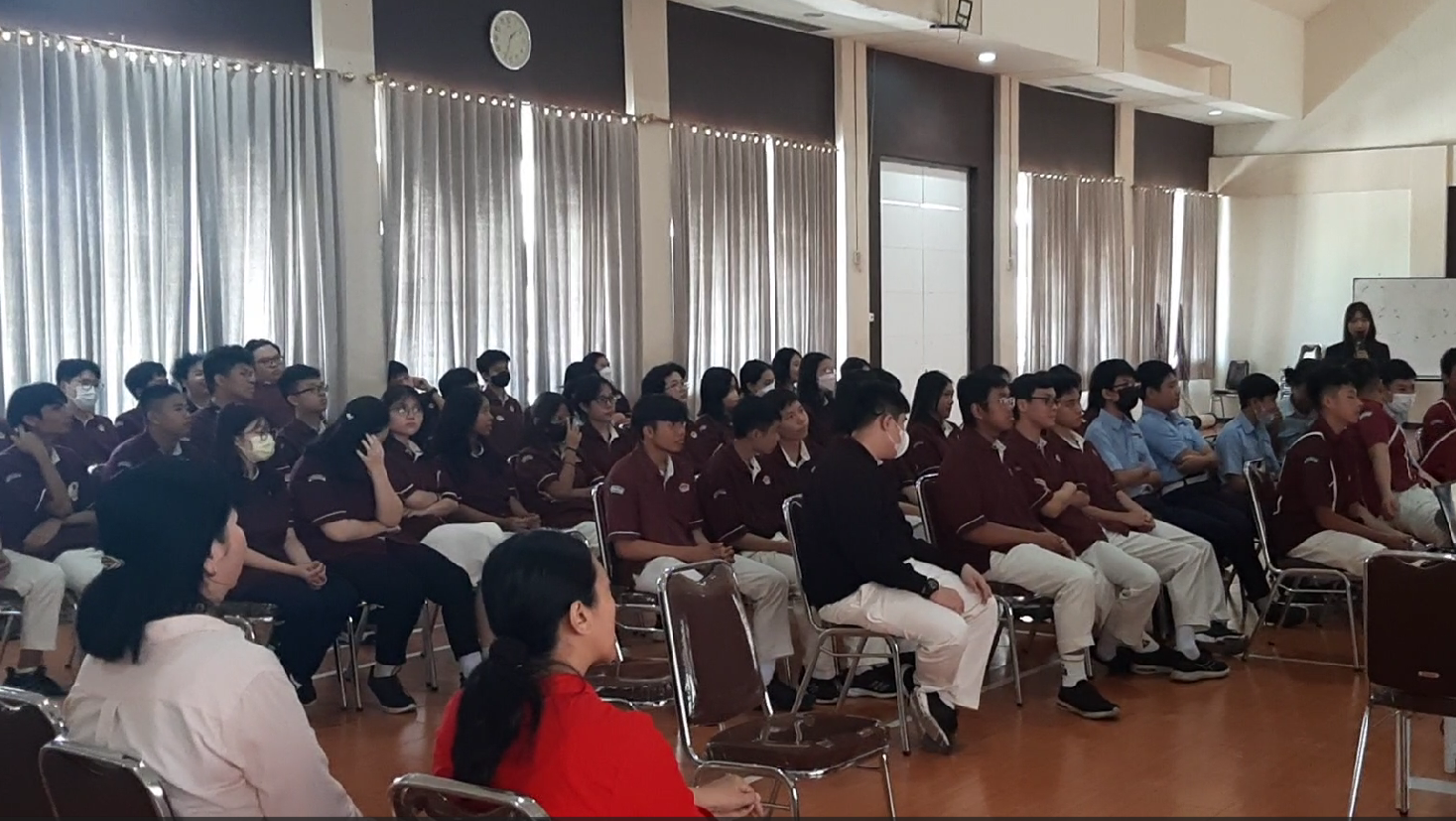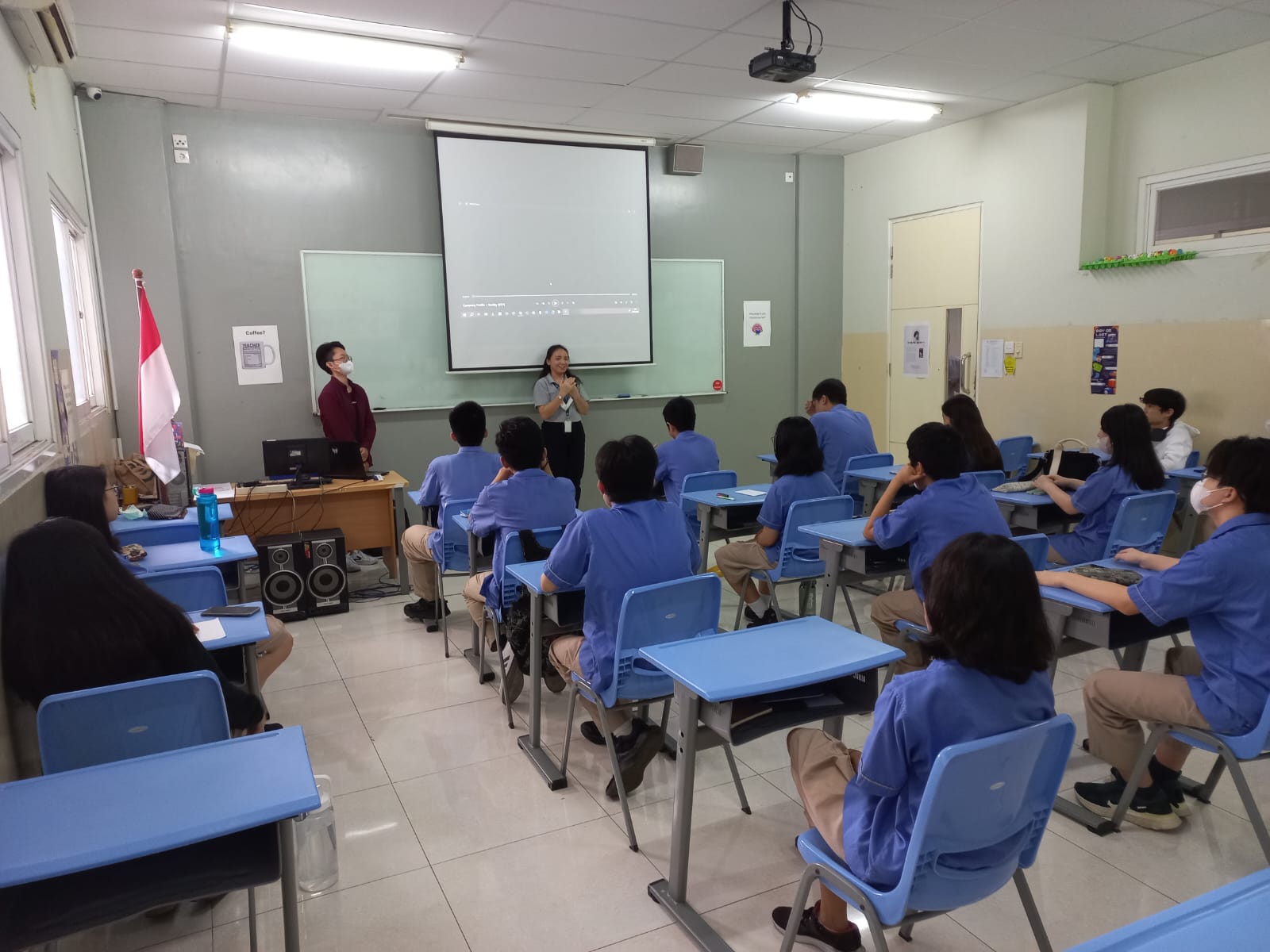
Creating Simple Face Stickers Using Computer Vision Techniques
KSP Season 13 Episode 4:
Creating Simple Face Stickers Using Computer Vision Techniques
Writer: Amelia D.

Photographer: Amelia D.
ISTTS again held the KSP Season 13 webinar entitled “Creating Simple Face Stickers Using Computer Vision Techniques”. This time the material was presented by Dr. Yosi Kristian, S. Kom, M. Kom. Mr. Yosi now serves as the head of the study program and Associate Professor in the informatics department of ISTTS. This webinar will be held on Tuesday, April 26, 2022 online via the Zoom and Youtube platforms.
At the beginning of the webinar, the speaker said that the goal he wanted to achieve was to put a sticker on the face using the Computer Vision technique. To be able to achieve these goals, the first thing that must be considered is Face Detection. In face recognition detection, there are two open-source library methods that are often used, namely Dlib and OpenCV. "Actually, in terms of accuracy, Dlib is better, while in terms of speed, OpenCV is better," explained Mr. Yosi.

Face Landmark Detection is a part in detecting the next face which is used to get better accuracy in face detection. This method will use landmark points for the feature extraction process so that the distance calculation for each feature is more accurate. This can help detect prominent points on the face such as the eyes, eyebrows, mouth and nose. Using Dlib OpenCV makes facial landmark-based face detection more accurate when the face is visible as a whole. This is because it can precision the image in adjusting the movement of the face, so the image will not be easily distorted.

The webinar was then followed by a Live Coding session. Mr. Yosi shows the code differences between OpenCV and Dlib. When compared, the code from Dlib is shorter than the code from OpenCV.


The webinar was then followed by a question and answer session between the KSP participants and Mr. Yosi. Then it ends with photos and attendance via Google Form for participants who have participated in the KSP.


